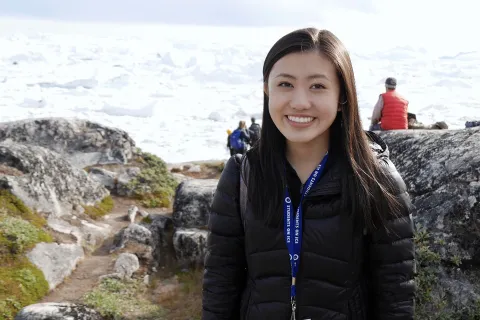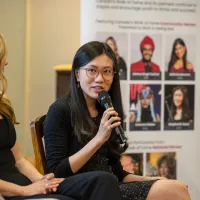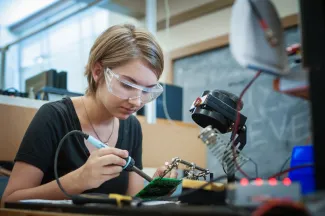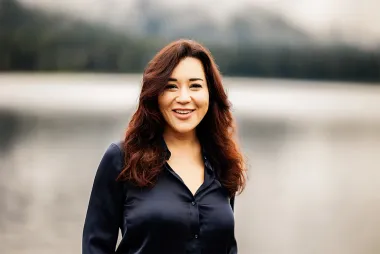"At UBC there are so many opportunities to explore your interests and try new things. If you’re unsure about what your interests are, there will be opportunities for you to figure things out. "

Stephanie Quon
- Degree: Bachelor of Applied Science
- Grad year: 2024
- Program:
- Campus: Vancouver
In May 2025, Stephanie Quon was named a Rising Star in BC Business’s 2025 Women of the Year Awards for the significant impact she’s had with The Sprouts Initiative, a foundation she started in 2017 that focuses on sustainability and accessibility initiatives.
This joins many other accolades for the UBC Engineering alumna, including being named the 2024 Community Hero by Canada’s Walk of Fame and one of Starfish Canada’s Top 25 Environmentalists under 25, as well as being the recipient of the BC Medal of Good Citizenship, the Engineers Canada Gold Medal Student Award and the Terry Fox Humanitarian Award.
In the spring of 2025, Stephanie finished up her first year of medical school at UBC. We caught up with Stephanie to talk about making the shift from engineering to medicine and to learn more about her experience studying engineering at UBC.

Tell us about some of your advocacy and volunteering work!
My primary focus has been The Sprouts Initiative, a group I started in 2017 when I was still in high school.
Over the past eight years we’ve organized over 150 national community service projects, raised over $3.7 million and completed 112 community-based accessibility projects.
We’ll work with community groups to identify their specific needs – whether that’s physical accessibility ramps, automatic doors or Braille signage – and then help out with finding funding for projects and coordinating their implementation. For example, we recently worked with the Adaptive Sailing Association of BC to upgrade some of their boats and were able to assist with the opening of a new community garden with the Disabled Independent Gardeners Association.
Sprouts also gets involved in projects that overlap with health care. I am currently working with REACH Community Health Centre to improve the experience for deaf and hard of hearing clients in their clinic.
REACH Community Health Centre Adaptive Sailing Association of BC
How was your first year of medical school?
I really enjoy it! There is so much to learn, and it is a huge privilege.
I have found that if you show up wanting to learn and willing to work hard, people are very willing to teach you.
Of course there are some challenges without a background in science, but it is very manageable.
Looking back to your undergrad, what led you to choose electrical engineering?
I chose electrical engineering with a biomedical engineering option because I wanted to learn about technology and electronics. I’d worked on an assisted device project in first year that I really enjoyed, and I knew that Biomed was a bit more down that path. I’d also heard great things about the program.
electrical engineering biomedical engineering option
You were the president of Women in Engineering. Why did you get involved?
I joined Women in Engineering in first year as a committee member, was on the executive for two years and served as president for two years. One of the big events that Women in Engineering organizes is the Women in Science and Engineering Annual Networking Event. I had attended the event in first year when I was questioning whether I belonged in engineering, and I’m so glad I did.
It was so inspiring and empowering to be surrounded by so many incredible women doing amazing things. Two years later, I was the one organizing the event.




